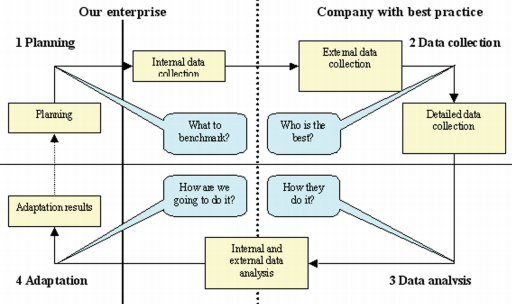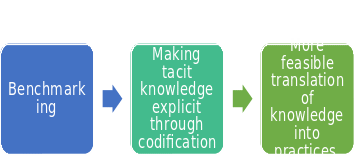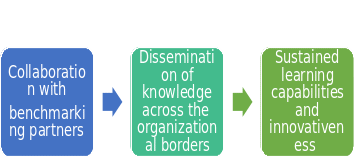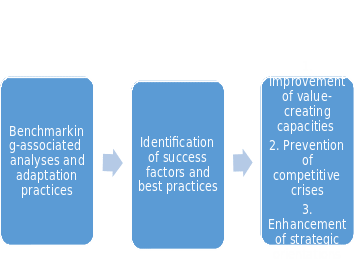Introduction: Defining Knowledge Management
Knowledge is one of the critical assets in any company, and its effective management is a necessary competency for creating competitive advantages and differentiation. In general, effective knowledge management (KM) system offers a right balance and smooth functioning among its key components which include people, processes, and technologies working together to disseminate both tacit and explicit pieces of information across the organization (Omotayo 4). It can be regarded as an essential strategic management instrument helping to manage “the collective information expertise” of employees at all corporate levels in order to achieve success in each of the planned business endeavors (Omotayo 12). It is valid to assert that the role of KM is particularly significant in project-based organizations (PBOs) because their work structure and format imply the development of temporary systems that merge both existing and new knowledge for achieving particular goals. Therefore, the manner in which a KM system is functioning in the PBO will define the level of responsiveness among project teams and leaders, the speed of knowledge transfer, and the overall quality of project performance
Bob Gold & Associates as a Project-based Organization
Bob Gold & Associates is an example of a PBO that conducts a plethora of its activities in a temporary project mode. It offers a wide range of public relation (PR) services including branding, product promotion, market analysis, advertising, and so forth. The company is based in the United States but works with clients across the globe. Therefore, to ensure business sustainability and maximize the quality and cost-effectiveness of its projects, Bob Gold & Associates should integrate KM into its project development activities because every future endeavor in the PBO will always be based on the maintenance and improvement of current knowledge (Loufrani-Fedida et al. 7). To do so, the company must implement the tool aimed to overcome major obstacles to effective KM: benchmarking. For this reason, this work has a purpose to define benchmarking and clarify which benefits the application of a benchmarking cycles van induce for Bob Gold & Associates.
Defining Benchmarking
Benchmarking is an efficient process contributing to better KM and supporting employee and organizational learning. It is defined as “the search for organizations best practices that lead to superior performance” and presents “continuous, systematic monitoring and evaluation of how well and effectively the enterprise carries out the service or produce the product, as compared with enterprises that produce best practices” (Jetmarová 2). In other words, benchmarking implies research on business competitiveness with a focus on the identification of weaknesses and needs for improvement. Additionally, this comparative study tool aims to clarify which activities must be performed to add customer value and which of them are the best ones. Overall, it implies a continuous knowledge generation process, as well as its translation into practice.

A simple, evidence-based benchmarking model designed by Jetmarová comprises four major steps: planning, data gathering, data assessment, and knowledge integration (5). These four phases are mutually interconnected and involve various KM activities, such as information coding, spread, storage, and so forth. Notably, the questions “What to benchmark?” and “Who is the best” are fundamental in the benchmarking process because they orient a company during the course of knowledge generation. At the same time, the main purpose of the illustrated benchmarking program is to answer the questions “How they do it?” and “How we are going to do it?”
Benchmarking Practices: Planning
The presented benchmarking model may include a plethora of practices that can be realized at different stages of its implementation. In particular, the planning phase is mainly associated with the measurement of the company’s critical success factors. The expected outcomes of this practice are the definition of benchmarking orientations, depth of the process, and its objectives (Jetmarová, “Comparison of Best Practice Benchmarking Models” 81). This practice allows identifying those strategic factor variables that directly impact client satisfaction and service quality, and it implies a profound assessment of the external environment and an overview of industry trends. The benefit of the planning phase in the benchmarking program is the provision of a structured approach and a solid basis for the generation of new knowledge.
Data Collection
Secondly, the organization must implement the following data collection practices: the development of knowledge about the enterprise’s own processes and business practices, the identification of the best actors within the industry, the collection of the external data, as well as the internal data that may help during the comparison (Jetmarová, “Comparison of Best Practice Benchmarking Models” 81). To compare data effectively, an enterprise should have a profound understanding of own operations, culture, and so forth. Therefore, the collection of internal data may imply the identification of the extent to which current products/services address customer needs and the analysis of processes involved in the firm’s value chain. They help the company to see how different elements in the value chain work and how they are aligned with the previously identified success factors. Also, by analyzing the external data, it is possible to find leaders in the industry and their key success factors and then compare own strengths and weaknesses with theirs. Notably, Jetmarová suggests contacting the benchmarking partners and actively collaborating with them during this stage in order to find a more detailed picture of their success factors (“Comparison of Best Practice Benchmarking Models” 81). An apparent benefit of these practices is a systematic acquiring of knowledge needed to impact client satisfaction and service quality. Additionally, Jetmarová observes that the information about best practices obtained through benchmarking is especially valuable for enterprises as it allows generating new competitive advantages (6).
Analysis
While the first two benchmarking phases prepare the company for learning, the last two foster it. Jetmarová notes that analysis implies the conversion of data into information, and the identification of performance gaps and areas for the improvement in the organization (“Comparison of Best Practice Benchmarking Models” 81). These practices imply the establishment of links between positive results and factors/operations leading to them. They organically lead to the formulation of new strategic objectives and creation of change plans. At this stage, the process of innovation development takes place. This practice is key to the improvement of organizational capacities and, as a result, the enhancement of abilities to fulfill the company’s missions and objectives effectively (Jetmarová 6).
Adaptation
The final stage in the benchmarking cycle is the adaptation, and it involves such practices as the revision of existing plans and the implementation of the best practices (Jetmarová, “Comparison of Best Practice Benchmarking Models” 81). These practices have a purpose of increasing the absorptive capacity of the enterprise or, in other words, facilitate the translation of knowledge into practice through the creation of supportive work structures and environments (Jetmarová 6). Not only does this benchmarking practice aims to establish relationships between the source of knowledge and the recipient but also helps motivate team members to use the newly acquired knowledge.
Knowledge Management in PBOs

It was mentioned before that knowledge is an essential asset in the project realization. However, because of the short-term orientations, PBOs such as Bob Gold & Associates encounter three major difficulties in their KM. According to Loufrani-Fedida et al., projects involve general knowledge needed to implement it (for instance, principles of budget management and project management) and knowledge that emerges during the project implementation (8). Therefore, for better project outcomes, there must be a balance between the knowledge inputs and outputs, between the exploration of new information and the exploitation of already known. However, PBOs may be reluctant to renew organizational knowledge aiming to increase the control over the project’s deadlines and costs (Loufrani-Fedida et al. 8). The problem is that by prioritizing the existing organizational knowledge, Bob Gold & Associates may reduce the opportunities for learning, which may consequently decrease the company’s competitiveness. The second problem is an inability to capture and share the accumulated knowledge at the final stages of the project because once it is finished and the team is discharged, the knowledge often becomes fragmented (Loufrani-Fedida et al. 8).
Benefits of Benchmarking for PBOs

It is possible to say that the described benchmarking model can assist Bob Gold & Associates in eliminating the main obstacles to KM while realizing projects and in fostering more effective implementation of KM activities, including information coding, socialization of information, and generation of new knowledge (Loufrani-Fedida et al. 9).
First of all, the most significant benefit of the benchmarking cycle is the encouragement of continual learning. The main feature of benchmarking is a focus on learning through exploration, and it is associated with the greatest benefits in terms of project management and innovativeness. Notably, not only can it allow adding to the existing knowledge needed for a successful realization of a certain project but also enable the organization to find information that may be useful in the long term for different initiatives and endeavors (Loufrani-Fedida et al. 9).


It is valid to note that benchmarking fosters more effective KM by making tacit knowledge explicit. It means that through codification of information gathered through both the external and internal analyses in the forms of policies, manuals, charts, and so forth, the PBO may formalize something previously known at a subconscious level. Consequently, through the sharing of the created documents and findings with team members, it becomes possible to integrate this explicit knowledge into employee behaviors.
Additionally, since benchmarking implies collaboration with other enterprises, it fosters the dissemination of knowledge in and out of the company. As a result of learning from others, the company can increase innovativeness and enhance its competitive advantages (Jetmarová 7). Additionally, by disseminating information across the company through shared visions, mental models, systems thinking, and employee education, Bob Gold & Associates, may sustain its learning capabilities.

Lastly, since the described four-phase benchmarking model is meant to integrate the exploratory processes with the translation of best practices into day-to-day operations, and the creation of new behaviors, it can also help the PBO to improve a value-creating capacity. Moreover, the exploration of external and internal environments and the identification of strengths and weaknesses allows developing plans for the prevention of competitive crises and the improvement of strategic orientations as well as resource management.
Conclusion
KM has a purpose of developing intangible assets within the organization and enhancing employee skills and competencies. Nevertheless, its implementation is often hindered by multiple obstacles to capturing the right knowledge areas, information gathering, and its spread across the company, and consequent translation into practice. It is valid to say that these difficulties are even more obvious in PBOs due to the nature of their work and the need to establish inter-team knowledge sharing, as well as storage of information after a project ends.
Such an analysis tool as benchmarking can assist the company in improving its KM system. This instrument allows transforming closed cultures in the open ones, where different employees start to share information freely among each other. It is the desired outcome for the PBO where each project is normally associated with its own culture and clearly defined informational and relational boundaries. In the PBO, benchmarking may be used to compare distinct projects and practices involved in them and, in this way, to increase the transfer of skills and competencies from one project to another. The main benefits that the company may gain through this approach are the fostering of continual learning and the creation of a favorable “best practice” culture, leading to greater innovativeness and increased competitiveness.
Works Cited
Loufrani-Fedida, Sabrina, et al. “Knowledge Management in Project-Based Organizations – An Investigation into Mechanisms.” The Journal of Modern Project Management, January-April, 2014, pp. 6-17.
Jetmarová, Barbora. “The Value Position of the Role of Knowledge Management and Its Benefits for Benchmarking Application.” Journal of Organizational Knowledge Management, vol. 2012, 2012, pp. 1-9.
Omotayo, Funmilola Olubunmi. Knowledge Management as an Important Tool in Organisational Management: A Review of Literature. 2015, Web.
Jetmarová, Barbora. “Comparison of Best Practice Benchmarking Models.” Problems of Management in the 21st Century, vol. 2, 2011, pp. 76-84.